Violet "LE-Magenta": description and agricultural technology
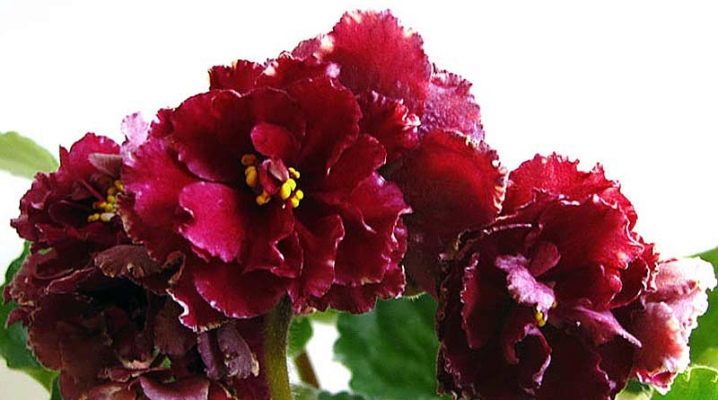
Violet "LE Magenta" is well known to amateur flower growers and is an adornment of many home flower beds. The variety was bred by a breeder from Vinnitsa Elena Anatolyevna Lebetskaya, the author of many other wonderful hybrids. All her offspring are prefixed with LE- and are distinguished by the stability of morphological features and beauty.
Description of the variety
It should be clarified that "LE-Magenta" is a typical representative of the Gesneriev family of the genus Saintpaulias, and has nothing to do with the Fialkov family. However, in everyday life, Saintpaulia is often called a violet, therefore, in this article, we will call it that way. Violet "LE-Magenta" was bred in 2011 and, despite its youth, quickly gained wide recognition among fans of ornamental plants. Outwardly, it looks very impressive, since it has large double or semi-double flowers of a red-burgundy color, edged with a very thin, sometimes intermittent border. This color looks very elegant and makes it one of the most beautiful indoor flowers.
A characteristic feature of the variety is abundant flowering, which lasts for a long time and sometimes reaches 2 months. Peduncles have a rather strong structure and contain from 3 to 5 flowers with a diameter of 5 cm. Moreover, the intensity of budding is noted even at the first flowering, which favorably distinguishes LE Magenta from other species.
Due to its hybrid origin, the plant sometimes sports. So, you can often see sports with almost white flowers or a wide light border.
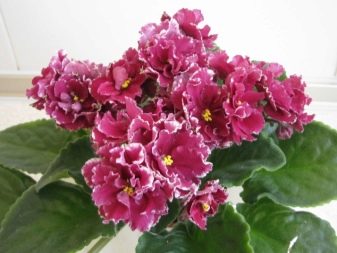

The violet leaves are rather large and are located on long petioles. On the reverse side, they are painted in a silvery-matte shade, which over time acquires a pinkish tone. However, as the plant ages, not only the color of the leaf plates changes. The flowers become darker in color, and the thin edging is replaced by a rather wide stripe.
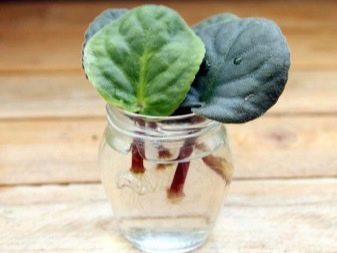
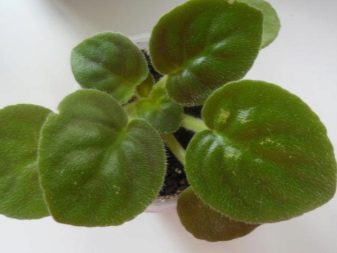
Growing conditions
Like most hybrid varieties, "LE-Magenta" requires the creation of a number of favorable conditions necessary for its cultivation.
Site selection and lighting
The plant is quite demanding on light and prefers bright, but at the same time, diffused light. This requirement is due to the tenderness of the fleshy leaves, which receive extensive burns even with the slightest overheating. The duration of daylight hours for violets should be from 10 to 12 hours, therefore, in winter, especially in regions with short daylight hours, artificial lighting should be used. You can also place the pots on the sill on the south side, while controlling that the temperature on it does not fall below 18 °.
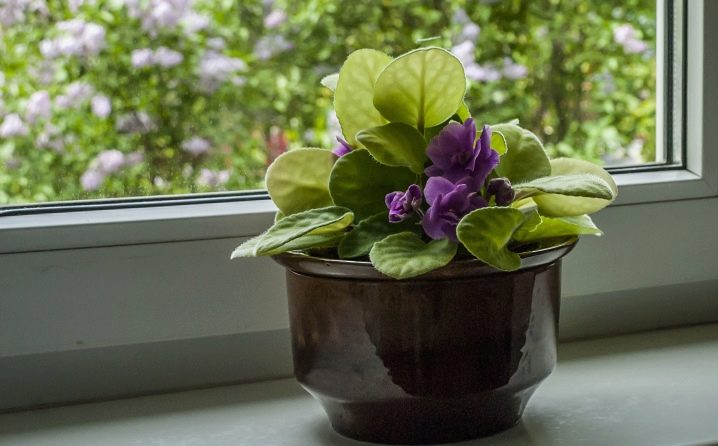
In the summer months, it is better to remove the violet on the eastern or western windows, and if this is not possible, then create moderate shading for it, placing it in the shade of higher colors.
Thermal mode and air humidity
Violet "LE-Magenta" is a rather thermophilic plant and feels great at temperatures from 18 to 25 °. If the apartment is not very warm in winter and the windows face north, it is recommended to wrap the pot with a layer of foam plastic at least 2 cm thick.And it is also necessary to regularly ventilate the room, trying to prevent drafts. The optimum humidity for violets is 50-60%.Therefore, during the winter months, especially if the house has central heating radiators, you should use a humidifier or hang damp sheets and towels on the radiators.
Priming
Violet "LE-Magenta" grows well both in a special purchased soil, and in a substrate prepared by yourself. For its preparation, deciduous soil, peat, humus and sphagnum moss are taken in equal shares. The mixture is thoroughly mixed, fine debris and remnants of roots are removed from it and lumps are broken. The resulting composition should be loose and soft, without foreign inclusions and organic residues. Then the soil is poured onto a baking sheet and placed in an oven for disinfection. The procedure is carried out at a temperature of 200 ° for 20 minutes.
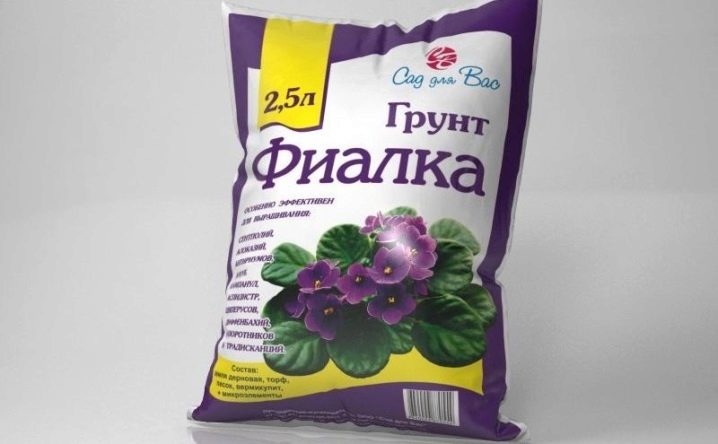
Pot
The variety grows equally well in both clay and plastic pots, so the choice of container depends on the personal preferences of the grower. A prerequisite is only the diameter of the pot, which for young shoots (children) should be at least 6 cm, and for an adult plant - from 8 to 12 cm. It is not recommended to plant a violet in a larger pot. This is due to the fact that until the flower grows a root system corresponding to the volume of the pot, it will not bloom. This usually takes about 2 years.
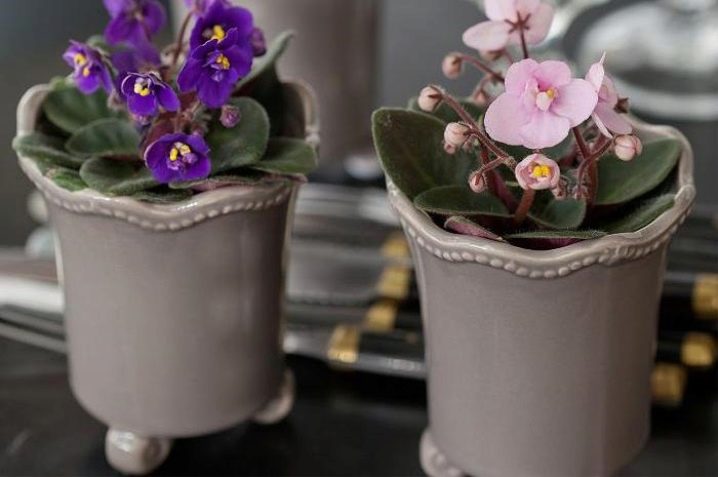
In addition, the pot must be equipped with holes to drain excess moisture. Otherwise, the water will stagnate, cause decay of the roots, and the plant will die.
Care Tips
Violet "LE Magenta" requires rather painstaking care and increased attention. Plant care includes several stages: watering, timely transplantation and top dressing.
Watering
It is necessary to water the flower as the top layer of the soil dries up, using for this settled water with a temperature of 22-24 °. The plant should be watered strictly at the root, while preventing water drops from falling on the leaves. This limitation is due to the presence of pile on the leaf plates, which retains drops and does not allow them to drain or evaporate. As a result of excessive moisture, the structure of the leaf is disturbed, and it begins to rot. Watering can be done in 3 ways: bottom, drip and wick.
- Bottom watering allows you to evenly saturate the earth with water and consists in the following: in a deep container - a bucket or a basin - such an amount of water is poured so that the pot is hidden in it at 3/4 of its height. The bottom of the pot must be perforated. The flower is kept in this position until the top layer of the earth darkens. Next, the pot is removed from the water and placed on a tray to remove excess moisture.
- Drip method consists in watering the plant directly under the root and is performed using a large syringe or a watering can with a long and narrow spout. Water so that the growing point and leaves remain dry. This method is the least labor-intensive and is widely used by flower growers.
- Wick method is as follows: a rope made of natural fibers is passed through the drainage hole of the pot, and the opposite end is placed in a container with water. This method allows the root system to take just as much water as it needs.
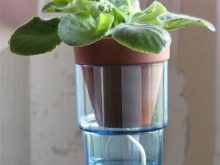
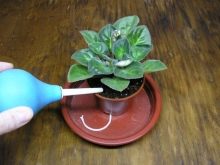
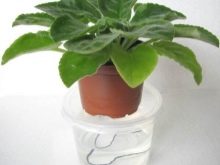
Top dressing
Feeding violets "LE-Magenta" is carried out 2 times a month, with the exception of the dormant period, which lasts from November to February. Fertilizers are applied to the moistened soil immediately after watering. Ready-made mineral complexes specially designed for Saintpaulias are used as top dressing. Good results are obtained by introducing a liquid organic composition "Stimovit", a microbiological solution "Baikal-M1" and a complex mineral additive "Master" marked for saintpaulias "20.20.20" or "18.18.18 + 3".
Before applying fertilizers, you should carefully read the instructions for use of the drug and in no case should the dosage be exceeded.

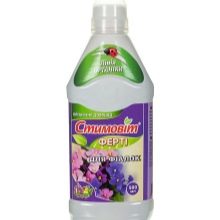
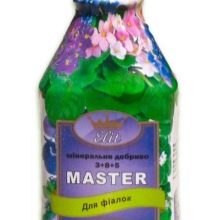
Transfer
Violets are transplanted once a year in early spring before the onset of hot weather. This period is the most favorable for two reasons:
- the plant has already left the dormant state when it was impossible to touch it;
- before budding, and even more so before flowering, there is still enough time during which the flower will have the opportunity to adapt after transplantation.
The process of transplanting violets takes place step by step.
- A 3 cm layer of expanded clay is placed on the bottom of the pot, on top of which a mixture prepared from peat, leaf earth and humus is poured. The pot is filled to about 1/3 of the total volume.
- Then a violet bush is placed in the center and little by little the voids are filled with the substrate.
- The next day, the plant is watered, after which it is transferred to normal care. It is not recommended to water the flower on the day of transplantation. This is due to the fact that the roots could be damaged, and they need at least a day for the wounds to heal. Otherwise, the process of decay of damaged roots may begin, and the plant will die.
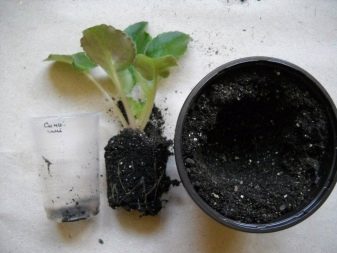
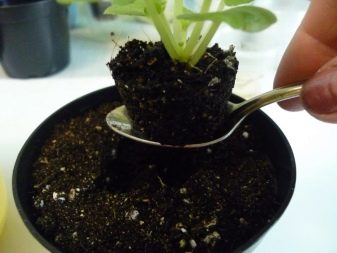
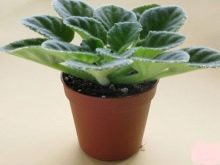
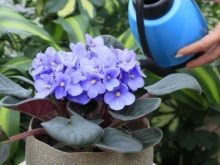

Diseases and pests
With flaws in care and lack of attention, Saintpaulia "LE-Magenta" can get sick. The most common ailments are fusarium and powdery mildew. The treatment of these diseases is complicated by the fact that the violet cannot be sprayed, since the delicate leaves of the plants die after such a procedure. Therefore, it is easier to prevent the disease than to deal with treatment later. So, the appearance of putrefactive spots (fusarium) is caused by a sharp drop in temperature or excessive watering. Powdery mildew, the first sign of which is considered the appearance of white spots, is also the result of excess moisture. Both diseases are fungal and appear due to improper care.
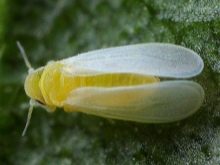
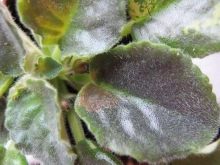

As for pests, in addition to the invasion of the whitefly, no one else gives the violet any special problems. If white flies nevertheless attacked the plant, then adults are caught by hand, after which the leaves are treated with a solution of green soap (10 g per 1 liter of water) and thoroughly blotted with a napkin.
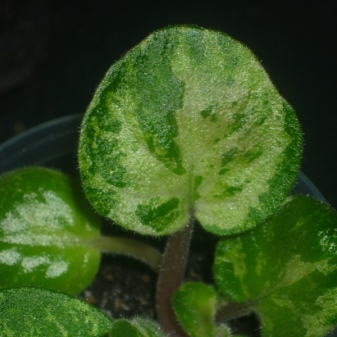

How to grow LE Magenta violets, see the next video.































The comment was sent successfully.